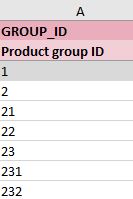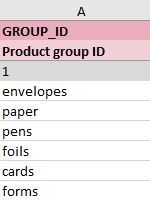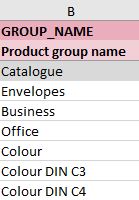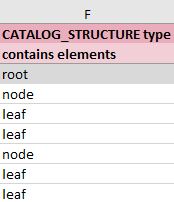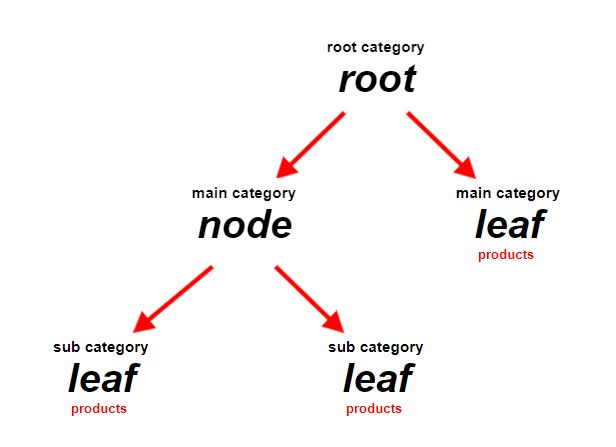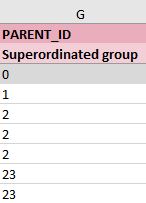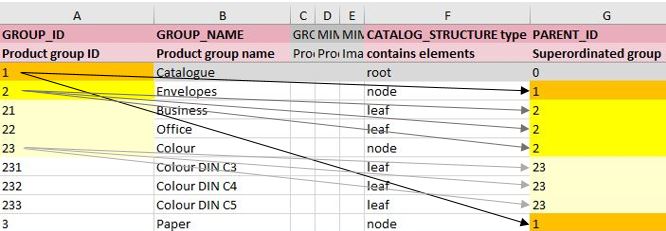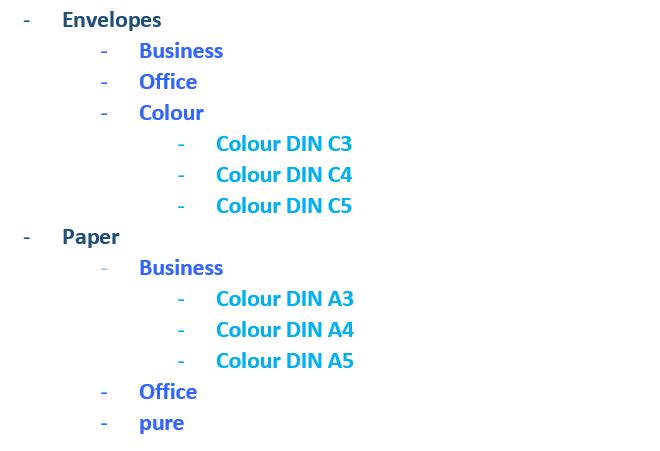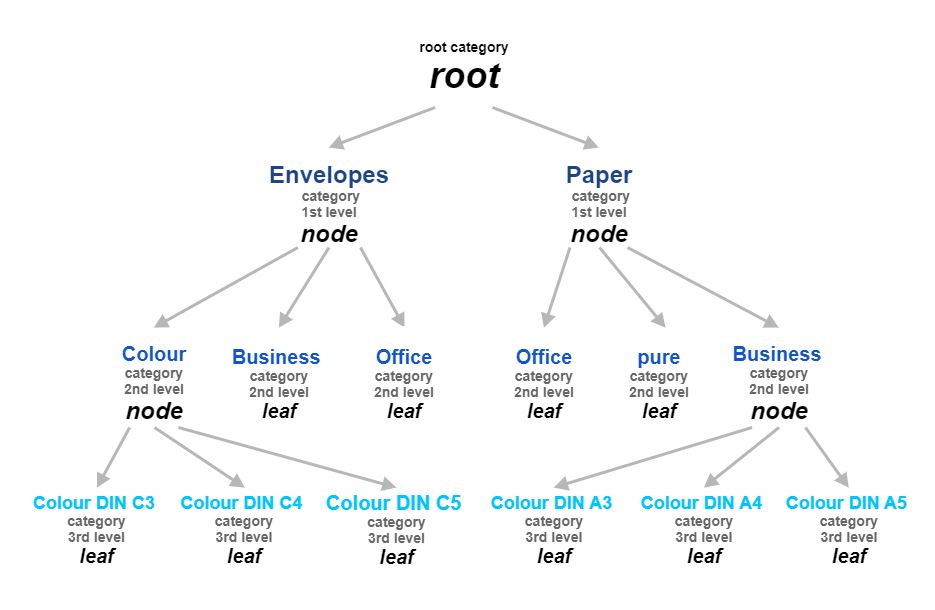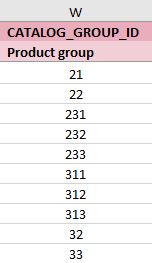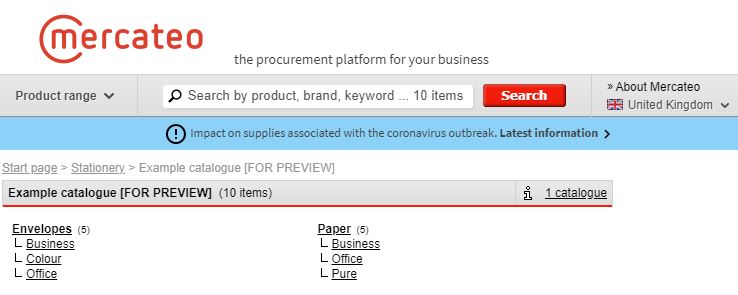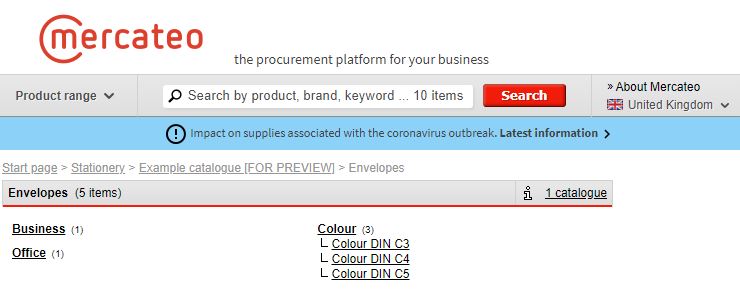The following article explains how the product groups are created line by line in the file „categories_CAT-ID_LANGUAGE_UTF-8.xls“.
Because each catalogue consists of both products and categories an additional file containing the product information is needed. How to create this file is described in the article Products – manual.
Excel templates for the products and categories file are available here:
|
Important notes on the Excel template: → Please do not change the order of the columns |
The number and name of product groups and the structure of the sub-categories can be chosen freely. For example, if you only have 5 items in your catalogue, one product group is sufficient.
In the items below you find the requirements and more information on the columns in the Excel template. The order corresponds to the order within the Excel file.

